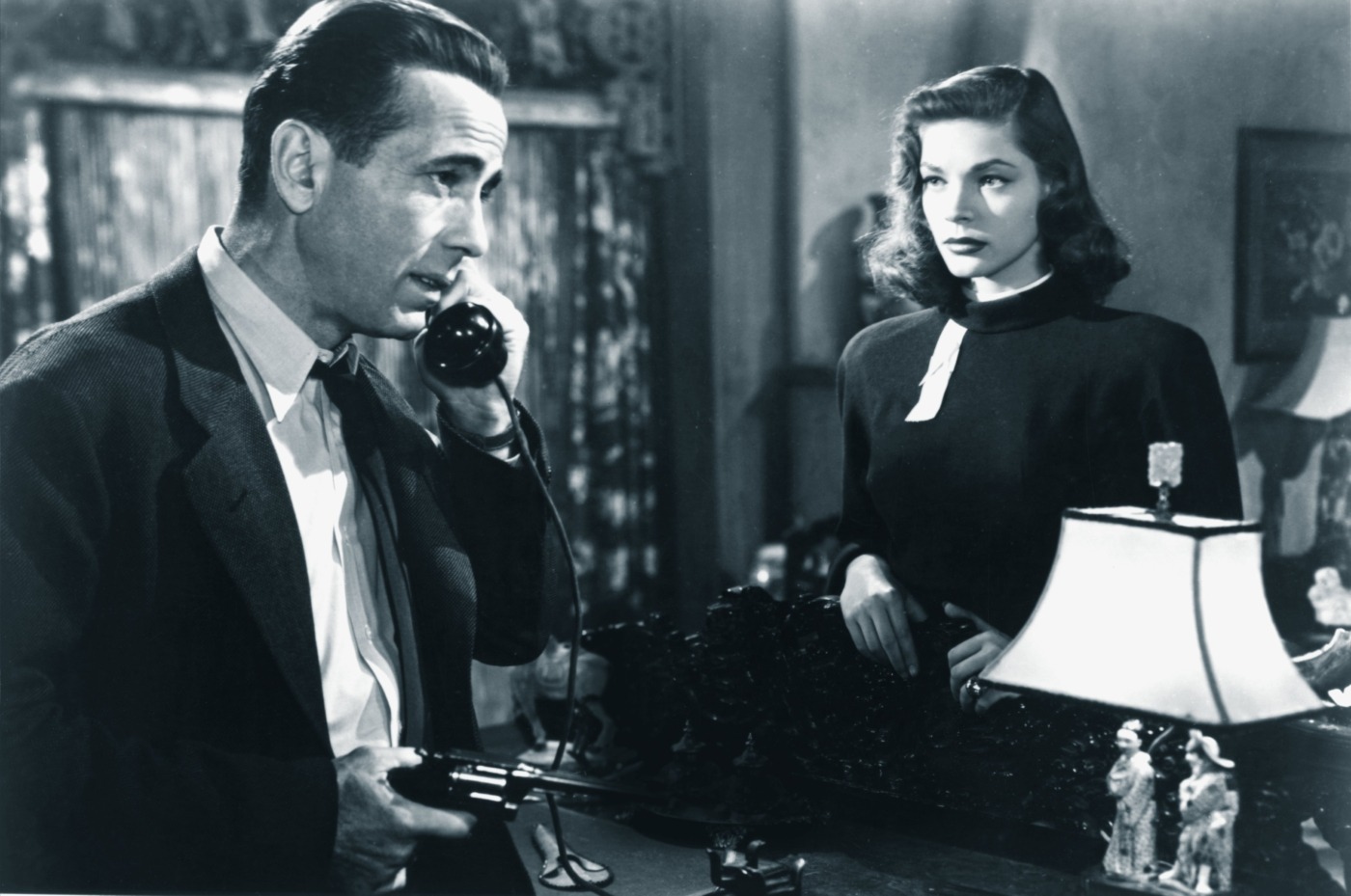Noir-vember: a selection of hard-bitten classics
Cynical private eyes, cigarettes, black and white, double crosses, femme fatales, infinite vice and corruption. This quintessential mix of grit and style is what makes noir. The hallmarks of film noir are the playthings of parody and should be instantly familiar, even if you’ve never seen a noir film. I’m willing to bet that vast amounts of people haven’t seen The Third Man, The Big Sleep or Double Indemnity, but a black and white image of a private eye with a hat and trench coat smoking a cigarette and bemoaning a lost love just screams noir. Its inescapable.
Everything from Pinky and the Brain to It’s Always Sunny in Philadelphia has parodied noir, Godard’s French New Wave classics are full of references to film noir, and sci-fi classic Blade Runner contains clear noir elements. The list just goes on and on. You can feel intimately familiar with the tropes and signs of the genre without ever having seen a single film noir. Let’s change that. There are dozens and dozens of rich, powerful, sumptuous noir films out there to recommend, so prepare for a discussion of the all-time greats.
The obvious first place to look is the 1940s, a decade where the Hollywood noir film was at its absolute peak. There are so many examples of beloved 40s noirs, including The Postman Always Rings Twice, Detour, The Maltese Falcon and Dead Reckoning. Worthy of particular focus are the two absolute classics of the era: The Big Sleep and Double Indemnity. Humphrey Bogart’s turn as Raymond Chandler’s prototypical cynical private eye Philip Marlowe and his incredible chemistry with his real-life wife and co-star Lauren Bacall make The Big Sleep a truly iconic film. The problem is that it’s incredibly difficult to understand what’s going on in the notoriously confusing storyline. You’re in it for the characters, style and atmosphere as much as anything else.
The obvious first place to look is the 1940s, a decade where the Hollywood noir film was at its absolute peak
For this reason, I consider Double Indemnity to be the better film. Revolving around a hapless insurance salesman, a murder plot and the undeniable charisma and magnetism of Barbara Stanwyck’s most iconic performance as an ice-cold femme fatale, Double Indemnity plays up to every noir trope and masters them all. A pitch-perfect voice over from our guilty lead threads together a fast-moving, punchy story that delivers everything that you could want from a classic noir film whilst keeping you thoroughly entertained and engaged for all of its 107 minutes.
Any discussion of classic noir would be bereft without mentioning the idiosyncratic genius of Orson Welles, the director, writer and actor who made The Lady from Shanghai and Touch of Evil, two visually gorgeous noirs whose technical mastery and impeccable direction make them feel startlingly modern even today. Welles didn’t direct The Third Man (a noir film commonly considered one of the best British films ever) but his instantly iconic turn as the impossibly charismatic gangster Harry Lime is one of the very best elements of a stratospherically great landmark of post-war cinema.
There were noir films after the 40s and 50s heyday, with the term neo-noir coined to describe films that hark back to this golden era. Of note are director David Lynch’s neo-noir crime dramas Blue Velvet and Mulholland Drive but my favourite neo-noirs come from the 1970s. The 70s noir revival saw the cynicism of the 40s private eyes chime well with the Watergate and Vietnam-era pessimistic zeitgeist. Chinatown is a masterful work and the most obvious example of an impeccable 1970s noir film, but for me The Long Goodbye is my pick for the best neo-noir I’ve ever seen. A hazy, seedy, stoned masterpiece of genre subversion and untouchable trance-like cool, Robert Altman’s 1973 film warps the hallmarks of noir. It has the jazzy title song, it’s based on a Raymond Chandler novel, the lead character is Philip Marlowe and the film was even written by Leigh Bracket (co-writer of The Big Sleep), but gone is the cool immaculate dress and inscrutable cynicism of Bogart. Instead, our lead is played by Elliot Gould, familiar to most of us as Ross and Monica’s dad in Friends. Long before he was an amiable prime-time sitcom dad, Elliot Gould was a counter-cultural icon of sorts, inhabiting the role of Marlowe as a permanently dishevelled, seemingly stoned and jaded cool cat dressed in a crumpled suit, cigarette seemingly glued to his lips as he hunts down a missing alcoholic, jokes his way through a police interrogation and (in a particularly amusing opening scene) searches for premium cat food for his beloved pet.
A hazy, seedy, stoned masterpiece of genre subversion and untouchable trance-like cool, Robert Altman’s 1973 film warps the hallmarks of noir
Gould strolls through an LA unlike the crime-ridden, icy city of the 40s noirs. Altman’s vibrant LA is a hotspot for hippies, minor celebrities, psychotic gangsters and the strange colourful characters typical of his films. The security guard who constantly performs poor impressions of 40s movie stars is an underrated highlight and a clear example of Altman’s lovingly iconoclastic subversion of the hallmarks of noir’s golden age. Not unlike The Big Sleep, The Long Goodbye’s story ultimately takes something of a backseat, in this case to the atmosphere of the city and the likeability and zany strangeness of its large cast. Altman’s film is an improvisational, gripping, unpredictable, innovative 70s classic that manages to successfully combine truly shocking scenes of violence with moments of on-the-spot comedy, delivering a loose yet enthralling picture that will stay with you long after you finish it. The closing scenes are surprising, a little bizarre and strangely triumphant. That description could go for the entire film. If you take one thing away from this article, please let it be this: watch The Long Goodbye. It merits your attention.

Comments